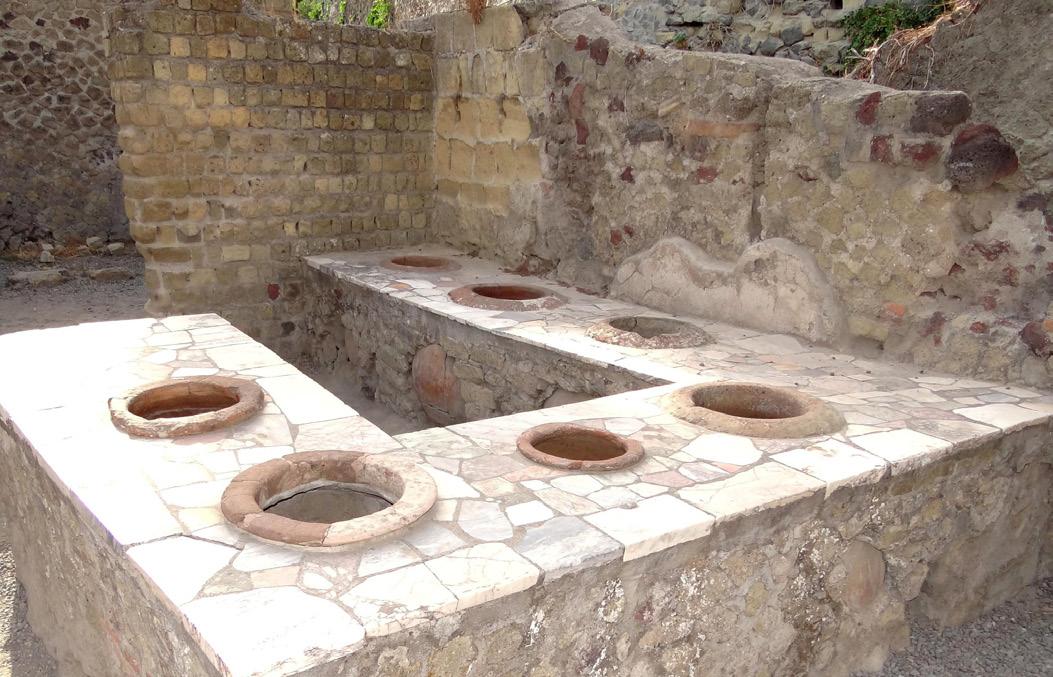
4 minute read
Imperfect Cuisine
By Accademia Italiana della Cucina
All together now
Advertisement
Food Delivery since 753 BC
Since the beginning of 2020, the global food industry changed as governments closed down restaurants and bars to slow the spread of the virus. Across the world, restaurants’ daily traffic dropped precipitously compared to the same period in 2019.
In Hong Kong, according to the Census and Statistics Department, revenue for the restaurant sector fell to HK$21.7 billion in the first three months of the year.
The industry found itself in need of a quick reaction, offering more and more home deliveries service. According to Forbes, it’s estimated that the industry will have annual sales of $365 billion worldwide by 2030!
But when and where this service become so popular?
“Tutte le strade portano a Roma”(“All roads lead to Rome”) . . This is another Italian story. Historians trace meal delivery services back to . . . the ancient Rome! Ancient Romans loved the concept of convenient meals as much as we do in the modern era, and they often ordered their fast-food restaurants Thermopolium. They served meals at a counter out of large clay pots that stored and kept the food hot, similarly to how we serve fast food today. For ancient Romans, the Thermopolium was a chance for them to have a hot, prepared meal on the go. They were basically a street kitchen and for many, those who couldn’t afford a kitchen of their own, the only opportunity to eat hot food. These kitchens have been found in the ruins of Pompeii and demonstrate the beginnings of the takeout concept.
Halfway across the world, another ancient civilization, the Aztecs, had gigantic open-air markets. Within these markets were vendors who strictly sold “on the go” food, mostly tamales.
Way later, the first recorded instance of food delivery comes – again – from Italy in 1889, when King Umberto and Queen Margherita were visiting Naples and decided to swap their mostly French food diet for the more local fare: pizza. They had Napoli pizza chef Raffaele Esposito prepare their pie with white mozzarella, green basil, and red tomatoes – what would soon be known as Margherita pizza – and had him delivering the pizzas to them! And that’s when the pizza delivery tradition was born.
Around the same time, in 1890 Indians developed what is called the dabbawala meal delivery system. With more workers in cities who didn’t have the luxury of time to have lunch at home, many turned to these lunchboxes (dabba) containing home-cooked food delivered by dabbawalas to people’s places of work. The idea is said to have been founded by Mahadeo Havaji Bachche, after a Parasi banker requested to have home-cooked meals in his office. He then started the delivery service with about a hundred men at that time before attempting to unionize them in 1930. To this day, at least 5,000 dabbawalas are said to be continuing on the tradition in Mumbai. During WWII, a more modern style of delivery evolved in the UK where a system was set up for food to be delivered to families that had lost their homes. The government in the UK provided hot meals to families all around the nation as a way to keep up the country’s morale. After the war ended, this idea was adopted by the private sector in the United States, and the modern take-out delivery service was established. The rise of food delivery in the United States was caused by economic necessity, as during the 1950s, the growing American middle-class was

content to stay at home watching their new television and to make their food in their kitchens. Italian restaurants were particularly well-received because WWII troops and post-war tourists had been exposed to Italian Cuisine.
With the growth of modern technology, there have been a lot of changes towards food delivery services over recent years and nowadays ordering food online can take less than one minute!
The Italian Academy of Cuisine has proudly decided to support this service with a very special, and unusual, night dedicated to food delivery and an entirely cold menu. The dinner, called BE COOL, provided our Italian guests an unexpected experience and a great surprise for our nonItalian guests.
As the upcoming months will continue to present quite some challenges for the food and beverage industry, our Academy will continue to

support this popular service – after all, we, Italians, are the founders of it!
The Accademia Italiana della Cucina has been present in Hong Kong since 2012. The Delegation is headed by Mr Savio Pesavento and welcomes new members, individuals who are passionate about food and knowledgeable about Italian cuisine










